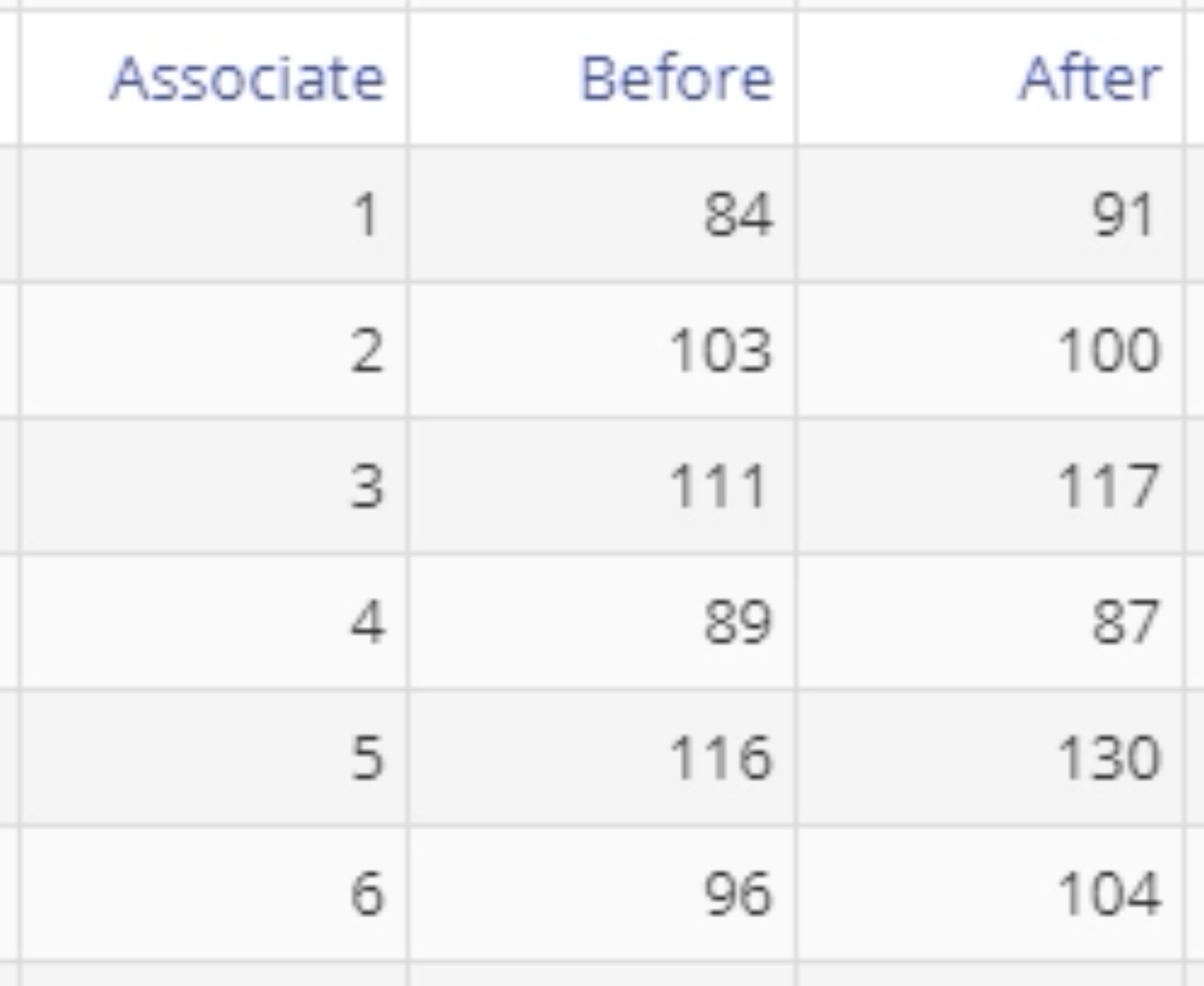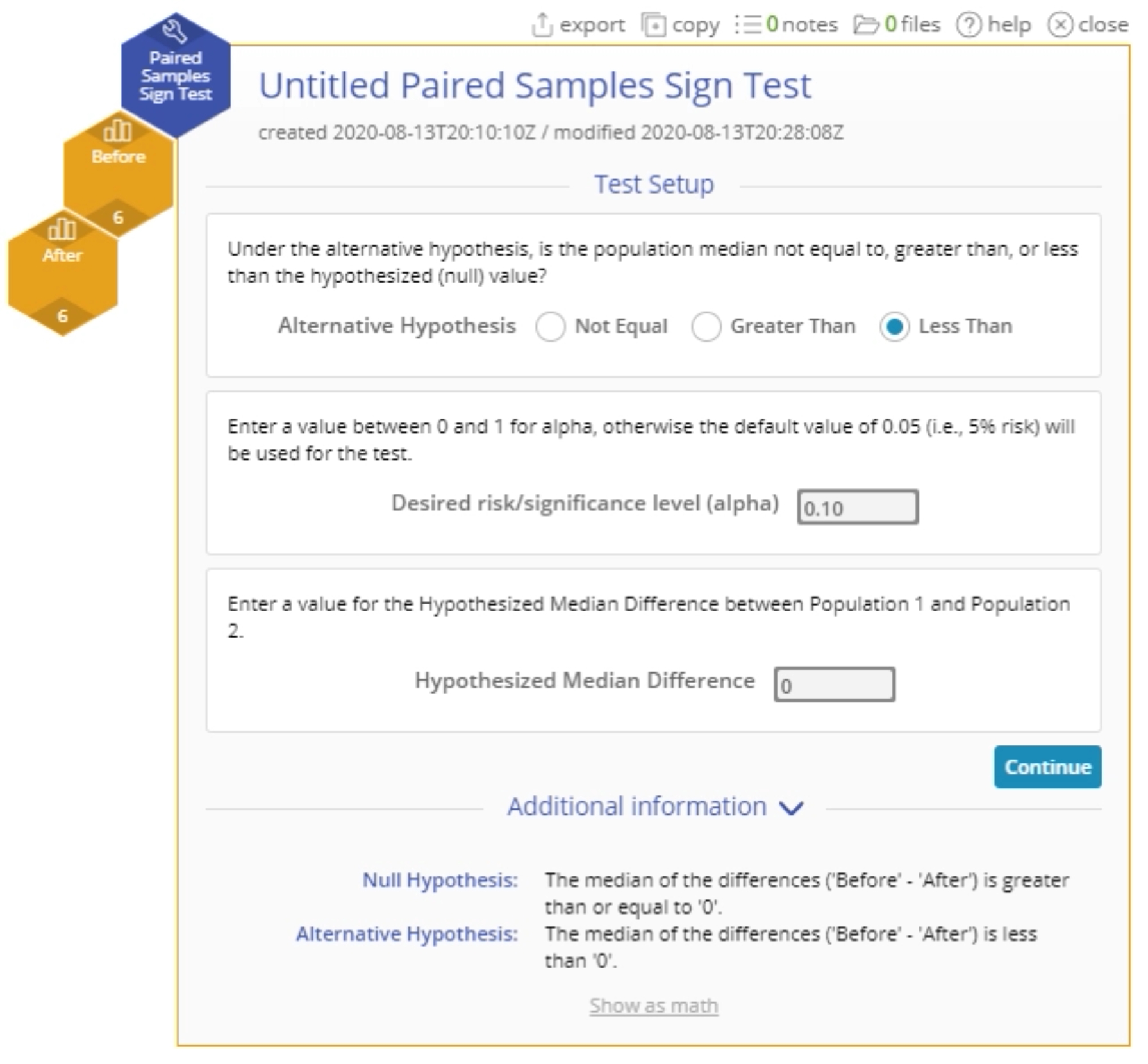Paired Samples Wilcoxon Signed Ranks Test Tutorial
When to use this tool
Use the Paired Samples Wilcoxon Signed Ranks (WSR) Test to compare the medians of two related (paired) continuous populations, such as 'Before' and 'After' measurements of test scores for the same group of subjects. As an example, a health insurance company compares the median sales of its associates before and after putting them through a new sales training program in order to test the effectiveness of the new program.
The Paired Samples Wilcoxon Signed Ranks Test is based on the sum of the ranks of the paired differences can be used on non-normal data.
The test makes the following assumptions:
- The data are continuous numeric.
- The units are randomly sampled.
- The distribution of the paired differences is symmetric.
If the distribution of differences is not symmetric, use the Paired Samples Sign Test instead.
Using EngineRoom
Note: You must have raw data to run this test. For the Paired samples test, make sure the number of observations in the two groups is equal.
Example:
The data for this example consists of the Before and After sales of six associates who went through a new sales training program. We want to test, at the 10% level, whether the training was effective, i.e., is the median of the differences d = (Before - After) less than 0?
Steps:
- Select the Analyze menu > Non-parametric > Click on the Paired Samples Wilcoxon Test.
- Click on the data file in the data sources panel and drag the Before and After variables onto the Data variable drop zones on the study.
- Set up the test as shown, and click Continue:
- The Paired Samples WSR Test output is shown:
The p-value is less than the chosen significance level of 10%, so we can conclude that the training program was effective (the median (Before - After) difference is smaller than zero.)
Paired Samples Wilcoxon Signed Ranks Test Video Tutorial
Instructor Resources
Was this helpful?



